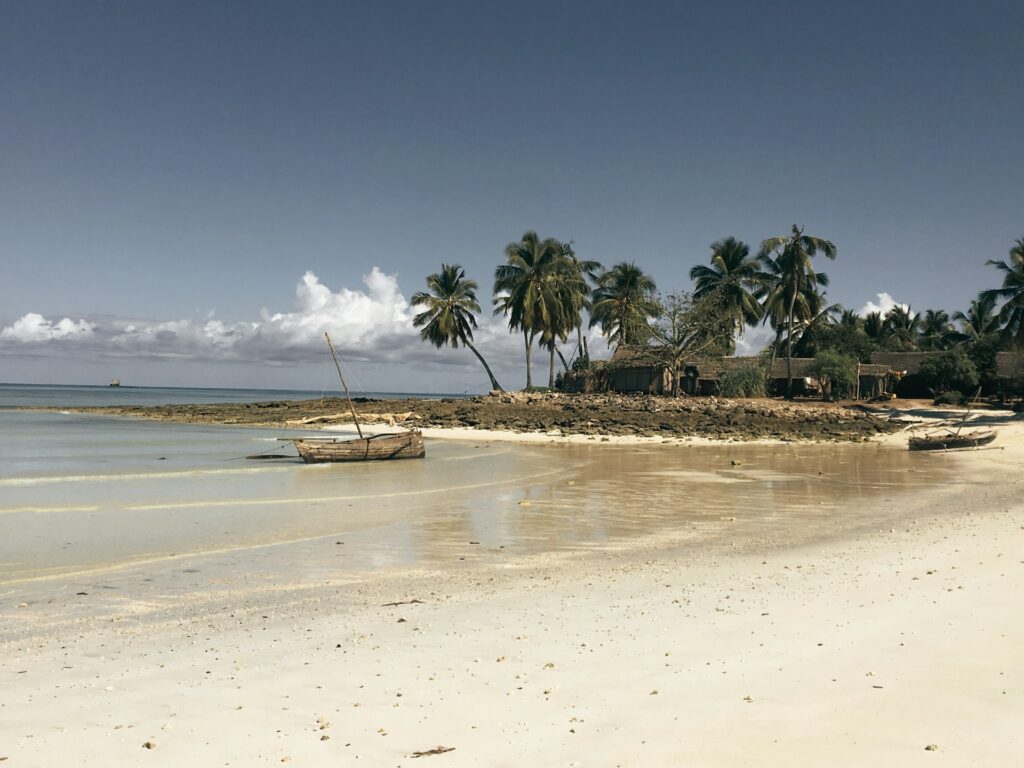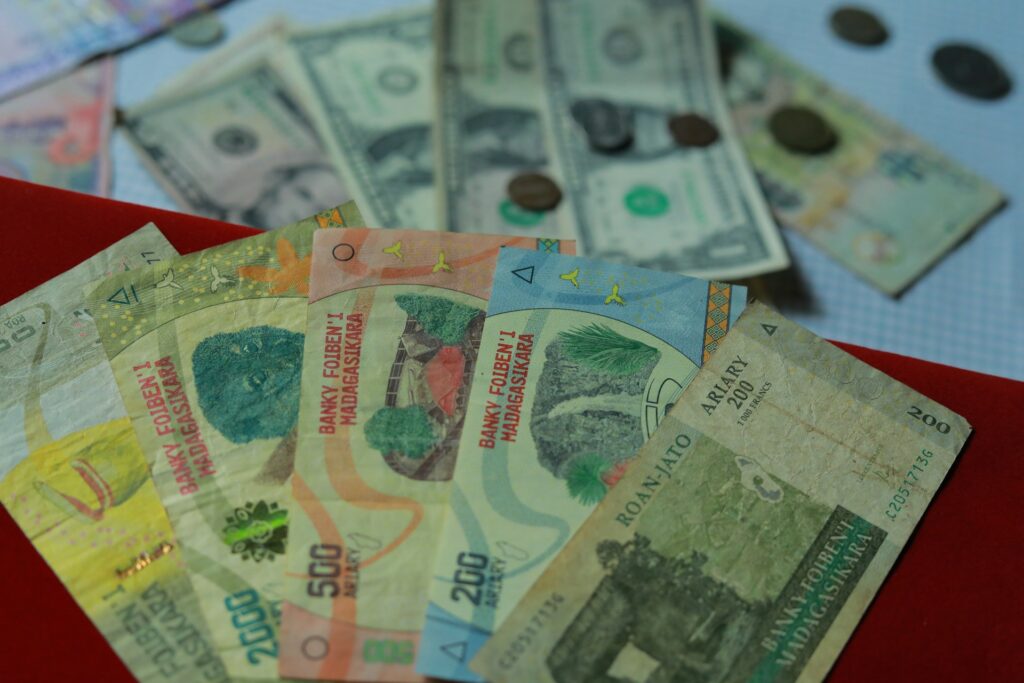Before Your Trip to Madagascar
Before your trip to Madagascar, it’s important to plan and prepare to fully enjoy the island’s unique biodiversity and vibrant culture. Known for its endemic wildlife, including lemurs and baobab trees, Madagascar offers diverse landscapes ranging from tropical rainforests to arid deserts. As you prepare to explore this fascinating destination, consider practical aspects such as visa requirements, vaccinations, and local customs. Understanding these elements will help you navigate Madagascar’s rich natural and cultural heritage, ensuring a smooth and enriching travel experience.
The Weather in Madagascar
Madagascar’s weather varies significantly across the island due to its diverse geography and climate zones. The country experiences two main seasons: a hot, rainy season from November to April and a cooler, dry season from May to October. During the rainy season, the eastern coast and the central highlands receive heavy rainfall, with the latter being cooler due to higher altitudes. The western and southern parts of the island tend to be drier and warmer, even during this period.
The dry season is generally more comfortable for travel, with lower humidity and pleasant temperatures. Coastal areas enjoy warm, sunny weather, while the highlands experience cooler, mild conditions. This season is ideal for exploring Madagascar’s unique wildlife and natural attractions, such as the famous Avenue of the Baobabs or the diverse ecosystems of the national parks. Regardless of the season, travelers should be prepared for varying weather conditions, especially when moving between different regions of the island.

How to Dress in Madagascar – Seasonal Considerations
Summer (December to February)

During Madagascar’s summer, which is the wet season, temperatures can be quite high, often reaching 30°C (86°F). Opt for lightweight, breathable clothing to stay cool. Light-colored, loose-fitting garments made from natural fabrics like cotton are ideal. Don’t forget to pack a waterproof jacket or poncho for sudden rain showers, and include insect repellent to guard against mosquitoes.
Autumn (March to May)
Autumn in Madagascar brings cooler temperatures and less humidity compared to summer. Packing a mix of light and moderate clothing is recommended. Layering is key; lightweight long-sleeve shirts and pants can protect against cooler mornings and evenings. A light jacket or sweater can be useful for cooler nights, and a small umbrella or rain jacket is advisable as occasional showers are still common.
Winter (June to August)
Winter is the coolest and driest period in Madagascar, with temperatures ranging from 10°C to 25°C (50°F to 77°F). While daytime temperatures are pleasant, it can get quite cold at night, especially in highland areas. Pack warm layers such as a medium-weight jacket, sweaters, and long pants. It’s also important to bring a hat and gloves if you plan to visit the highlands or stay in cooler regions.
Spring (September to November)
Spring marks the transition from cooler to warmer weather in Madagascar. Temperatures begin to rise, making lightweight, breathable clothing suitable for daytime. However, it can still be chilly in the early mornings and evenings, so packing a light sweater or jacket is wise. As the rainy season approaches, carrying a light rain jacket or poncho is beneficial, as brief showers may occur.
The Currency in Madagascar

The official currency of Madagascar is the Malagasy Ariary (MGA). It is used throughout the country and is the standard form of money for all transactions. When traveling in Madagascar, it’s essential to carry enough cash, especially when visiting rural areas where card payments and ATMs may not be available. Larger cities and tourist areas have ATMs and accept major credit cards, but it’s wise to have small denominations of cash for smaller purchases, tips, and markets.
It’s advisable to exchange currency upon arrival, either at the airport, banks, or authorized exchange bureaus. While some hotels and larger establishments may accept foreign currencies such as the Euro or US Dollar, the exchange rate may not be favorable, and it’s generally more convenient to use the local currency.
Which Currency Can Tourists Use in Madagascar?
Tourists in Madagascar primarily use the Malagasy Ariary (MGA) for all transactions. While some high-end hotels, restaurants, and tour operators in major cities may accept US Dollars or Euros, it is generally more practical and cost-effective to use the local currency. Smaller businesses, especially in rural areas, may not accept foreign currencies, so carrying enough Ariary is essential.
Where to Exchange Money in Madagascar?
Money can be exchanged at several locations in Madagascar, including the airport, banks, and authorized exchange bureaus. Major cities like Antananarivo and Antsiranana have a good number of facilities for currency exchange. ATMs are also available in urban areas and tourist destinations, allowing travelers to withdraw local currency using international credit or debit cards. However, in rural areas, exchange services and ATMs may be limited, so it’s advisable to carry sufficient cash when traveling to these regions.
Tips for Exchanging Money in Madagascar
- Avoid Street Exchangers, For security reasons, always use authorized exchange bureaus or banks rather than street exchangers, who may offer better rates but are unreliable and can be risky.
- Carry Small Denominations, having small bills is useful for everyday transactions, especially in markets, local shops, and for tips, as larger notes can be challenging to break.
- Be Aware of Exchange Rates, Keep an eye on the current exchange rates and be aware of potential service fees when exchanging money. It’s wise to exchange only as much as you need to minimize the impact of fluctuating rates.
- ATMs and Credit Cards, While ATMs are convenient, they may charge withdrawal fees, and not all machines accept international cards. It’s a good idea to have backup cash and to notify your bank of your travel plans to prevent card blocks.
- Secure Your Cash, Always secure your cash, whether it’s in a money belt or a secure wallet. Be cautious when handling money in public places to avoid drawing unnecessary attention.
The Language in Madagascar
Madagascar is a linguistically diverse country with Malagasy as its official language. Malagasy is spoken nationwide, with various dialects reflecting the island’s rich cultural tapestry. The language is part of the Austronesian family and shares similarities with languages spoken in Southeast Asia and the Pacific Islands, hinting at the island’s historical connections. The standard dialect, Merina, is based on the speech of the highland region around Antananarivo, the capital city.
In addition to Malagasy, French is also widely spoken, especially in urban areas and among the educated population. French serves as the second official language and is used in government, education, and business. English is less commonly spoken but is increasingly taught in schools and used in the tourism industry. Visitors to Madagascar will find that basic French phrases can be quite helpful, especially in hotels, restaurants, and when interacting with locals in tourist areas.
The Necessary Documents and Emergency Contacts
Visa and Passport for Madagascar
Travelers visiting Madagascar must have a valid passport and, in most cases, a visa. The passport should be valid for at least six months beyond the intended departure date from Madagascar and should have at least one blank page for visa stamps. It is important to check the latest entry requirements as they can change.
Most visitors, including tourists, need a visa to enter Madagascar. Visas can be obtained upon arrival at the airport or through Malagasy embassies and consulates before departure. Tourist visas are typically valid for 30 or 60 days, with the option for extension. It’s advisable to carry a return or onward ticket and proof of accommodation or sufficient funds for the duration of the stay, as these may be requested upon entry. Additionally, a small fee is usually required for the visa, payable in cash. To avoid any inconvenience, travelers should ensure they have the necessary documents and funds before arrival.
Travel Insurance
You must have travel insurance with a minimum medical, evacuation and repatriation coverage of US$50,000 covering all applicable dates of travel with the Tour Operator. This insurance must cover personal injury and emergency medical expenses. On the first day of each Tour, a representative of the Tour Operator will verify that you have sufficient insurance in place. You are strongly recommended to extend your coverage to include cancellation, curtailment, and all other expenses that may arise as a result of loss, damage, injury, delay or inconvenience while traveling. You acknowledge that insurance coverage is not included in the cost of any Tour offered by the Tour Operator, and you are required to obtain separate coverage at an additional cost. It is your responsibility to ensure that you have sufficient coverage and comply with the terms of the applicable insurance plans. You are responsible for advising your insurer of the type of travel, destination(s) and activities included in your booking so that the insurer may provide appropriate coverage.
Travel Vaccines for Madagascar
When traveling to Madagascar, ensure you’re up to date on routine vaccinations such as MMR, DTaP, varicella, polio, and the flu shot. Specifically for Madagascar, get vaccinated for **Hepatitis A** and **Typhoid**, as these protect against diseases transmitted through contaminated food and water. **Hepatitis B** is advised if there’s a risk of exposure to blood or bodily fluids. If you’re coming from a yellow fever-endemic area, proof of **Yellow Fever** vaccination may be required, though Madagascar itself does not have this risk. **Rabies** vaccination is recommended if you’ll be in contact with animals or spending time outdoors. Lastly, take **malaria prophylaxis** if traveling to areas where malaria is present. Consult with a travel health clinic for personalized advice.
Essential Emergency Numbers in Madagascar
In Madagascar, knowing essential emergency numbers can be crucial for a safe trip. Here are some important contacts,
- Police, 17
- Ambulance, 34 20 22 641
- Fire Department, 18
- Medical Emergencies, 20 22 221 87
Vegetarian, Vegan and Gluten-free Eating in Madagascar

In Madagascar, adhering to vegetarian, vegan, or gluten-free diets requires some preparation but is quite manageable. For vegetarians, the local cuisine offers options like rice with beans, vegetable stews, and various tropical fruits. These staples can form a substantial part of a vegetarian diet. Vegan travelers might face more challenges as many local dishes include dairy and meat, but they can still find suitable options such as rice-based meals with vegetables, fresh fruits, and potentially vegan-friendly dishes in international restaurants or larger cities.
For those following a gluten-free diet, Madagascar’s cuisine is generally supportive, as it heavily features rice and root vegetables, which are naturally gluten-free. However, it is important to avoid bread and pastries, as these may contain gluten. To avoid cross-contamination, exercise caution with food preparation and selection.
To navigate these dietary needs effectively, communicate your restrictions clearly, research dining options before you travel, and consider shopping at local markets for fresh, suitable ingredients. With some effort and preparation, you can maintain your dietary preferences while enjoying the diverse flavors of Madagascar.
Do’s and Don’ts in Madagascar
Do’s in Madagascar
- Do Respect Local Customs and Tradition, Learn about and show respect for local customs. Knowing a few basic phrases in Malagasy or French can enhance your experience.
- Do Stay Informed About Health Precautions, Follow health advice, get necessary vaccinations, and take appropriate measures to protect against mosquito bites.
- Do Drink Bottled or Purified Water, To avoid waterborne illnesses, consume only bottled or purified water, ensuring the seal is intact before purchase.
- Do Stay Informed About Local Safety: Stay updated on travel advisories and local safety information to ensure a safe and enjoyable trip.
Don’ts in Madagascar
- Don’t Ignore Local Laws and Regulations, Familiarize yourself with and adhere to local laws, including those related to protected areas and wildlife conservation.
- Don’t Engage in Wildlife Trade, Avoid participating in or supporting illegal wildlife trade, as Madagascar is home to many unique species and conservation is critical.
- Don’t Leave Valuables Unattended, Keep your personal belongings secure, especially in crowded areas or public places, to prevent theft.
- Don’t Wander into Rural Areas Unaccompanied, Some rural areas may be isolated with limited access to medical services, so travel with a guide or in a group.
- Don’t Photograph Sensitive Areas, Avoid taking photos in restricted or sensitive areas, such as military installations, without permission.
- Don’t Litter Properly dispose of trash to support local environmental efforts and help maintain the country’s natural beauty.
What to Pack for Madagascar
Travel Adapter for Madagascar
When traveling to Madagascar, it’s important to bring the correct travel adapter to ensure you can use your electronic devices. Madagascar primarily uses Type C and Type E plugs, which have two round pins. The standard voltage is 220V, and the frequency is 50Hz. If your devices are not compatible with these plug types or the voltage, you will need an appropriate adapter or converter.
For convenience, a universal travel adapter with multiple plug options can be a versatile choice, covering various plug types you might encounter in other countries as well. Always check the voltage rating of your devices to avoid damage from voltage differences.
Wifi Access and Mobile Connectivity in Madagascar
In Madagascar, Wi-Fi access and mobile connectivity can vary depending on your location. In major cities like Antananarivo and tourist hubs, many hotels, cafes, and restaurants offer Wi-Fi, though the quality and speed may be inconsistent. It’s advisable to check in advance or ask for Wi-Fi availability upon arrival.
For mobile connectivity, Madagascar has several local telecom providers such as Telma, Orange, and Airtel. SIM cards are widely available for purchase at airports, major cities, and shops. Ensure your phone is unlocked to use a local SIM card, which can provide you with data and local calls at a more affordable rate than international roaming. Coverage may be limited in remote or rural areas, so plan accordingly if you need reliable communication in such regions.
In Your Suitcase
- Lightweight Clothing, Pack breathable, lightweight clothes suitable for warm weather. Include long-sleeve shirts and pants to protect against mosquitoes.
- Comfortable Footwear, Bring sturdy walking shoes or hiking boots for exploring various terrains and comfortable sandals for casual wear.
- Bug Repellent, Pack insect repellent with DEET to guard against mosquito bites and potential diseases like malaria.
- Rain Gear, A lightweight, waterproof jacket or poncho is essential for the rainy season or unexpected showers.
- Small First Aid Kit, Include basic items like band-aids, antiseptic wipes, and pain relievers for minor issues.
- Probiotics to keep your system strong and any prescribed medications you use
- Travel Documents, Ensure you have your passport, visas, travel insurance, and any necessary permits.
In Your Daypack
- Water Bottle: Keep a refillable water bottle handy to stay hydrated throughout the day.
- Snacks, Pack energy-boosting snacks such as nuts, dried fruits, or granola bars for quick nourishment on the go.
- Sunscreen and Lip Balm, Carry sunscreen and lip balm with SPF for regular reapplication to protect your skin from sunburn.
- Camera or Smartphone, Keep your camera or smartphone readily accessible for spontaneous photos and navigation.
- Travel Guide or Map, A travel guidebook or map can be helpful for quick reference and navigation while exploring.
- Rain Poncho or Jacket, a compact rain poncho or jacket can be useful for sudden rain showers.
- Local Currency, keep some cash on hand for small purchases or emergencies.
- Personal Identification, carry a copy of your passport.
- Sunglasses and Hat, to protect your eyes and face from the sun, have your sunglasses and a hat readily available.










